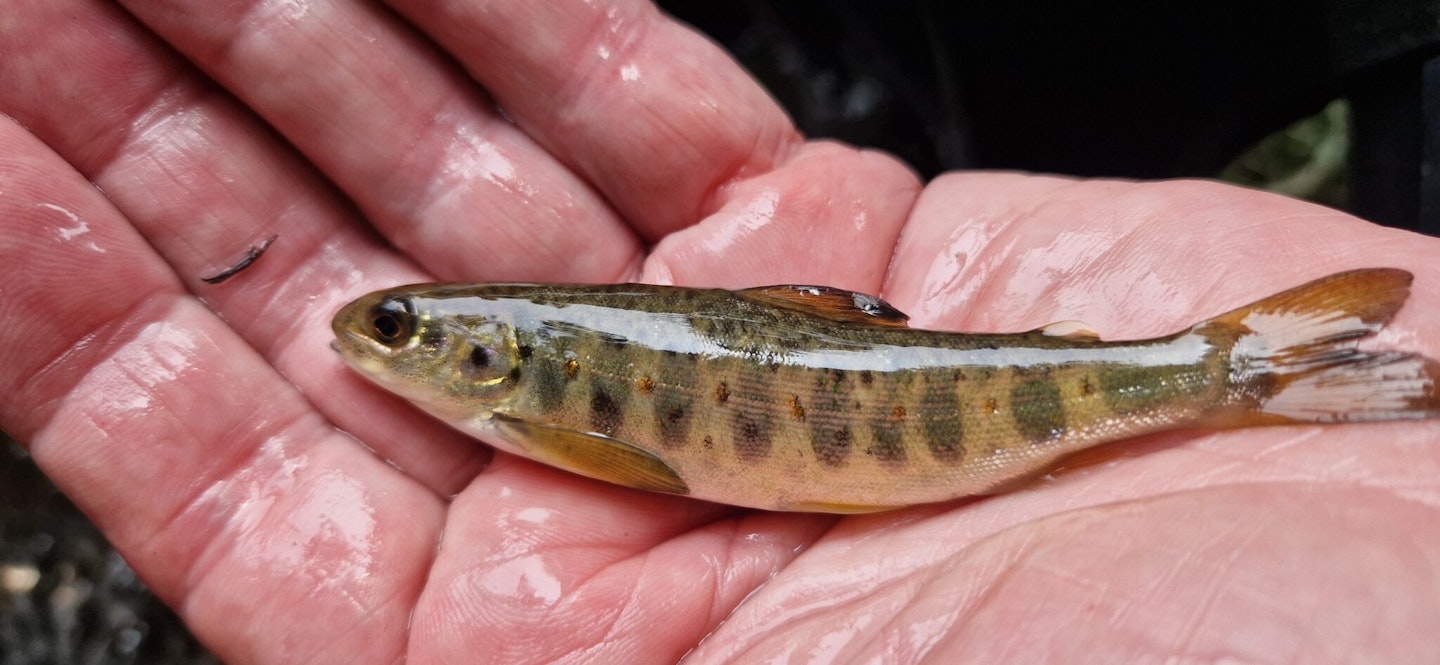It is no secret to the angling community that Britain's Atlantic salmon numbers have been dwindling over the past few decades, to the point where some rivers that used to have a healthy population of breeding salmon, no longer have any.
While Atlantic salmon were put back onto the endangered list in 2023, we reported only this year that numbers in certain parts of the country were on the rise again, and just this week, a salmon parr was discovered in the River Don, marking the first evidence of breeding salmon in the river for the last 200 years!
The juvenile fish was found in Sheffield, while the Don Catchment Rivers Trust (DCRT) staff and volunteers were undertaking an electrofishing survey on the river, marking the most important discovery the river has seen in decades!
Like many UK rivers, The Don used to have a strong number of salmon running, but due to pollution and man-made barriers such as weirs, the migration routes back to the spawning grounds were blocked to the point no salmon could return and the population became all but extinct.
Over 35 years ago, DCRT Co-Founder Chris Firth MBE observed salmon returning to the Don as the water quality started to improve. Over the last 20 years fish passes like the Crimpsall Rock Ramp and Masborough Fish Pass have been installed on the Don to help aid migrating populations of salmon to reach their spawning grounds.
Despite these impressive efforts, the teams involved were unaware as to whether the salmon they were observing in the river were successfully spawning, but this tiny salmon parr proves that all the effort has been worthwhile.
“For almost my entire life I had to witness the misery of this once prolific salmon fishery. Its recovery is beyond my wildest expectation, and the discovery of this salmon parr is the culmination of my life’s work.” Chris said.
The work won't stop here though as the DCRT along with other charities and government organisations are planning to further enhance conditions and migratory routes further up the river.
The Trust is now turning its attention upstream. The next major barriers are two weirs at Oughtibridge. Removing or modifying them will be vital to open up more historic spawning grounds and help secure the long-term recovery of salmon in the catchment.
Now that there is definitive evidence of spawning, teams will also have the additional task of improving routes downstream to make them suitable for salmon smolts on their journey to the sea.
If young salmon born in the Don are to return in future years to spawn, they must be able to migrate safely downstream to the sea. This part of their journey is often forgotten. Smolts struggle to pass over shallow-topped weirs, making them easy targets for predators like herons and otters. One key next step is to cut deeper “notches” into weirs, creating safer routes to the sea.
A spokesperson from the Great Yorkshire Rivers Partnership said:
“This is incredible news and is testament to the many years of hard work with partners to address the barriers on this catchment."
"It shows that our ambitious plan to address all artificial barriers by 2043 to allow free passage for fish, such as the iconic salmon, is going to have a huge benefit to the rivers of Yorkshire.”
DCRT is a charity and relies on donations as well as grants to fund its work. You can find out more, donate, or get involved in upcoming habitat projects and volunteer events by visiting www.dcrt.org.uk.

Subscribe to Angling Times magazine today. Choose a Print+ Subscription and you'll get instant digital access and so much more. PLUS FREE UK delivery.
